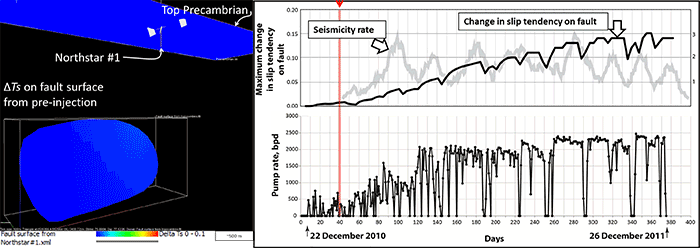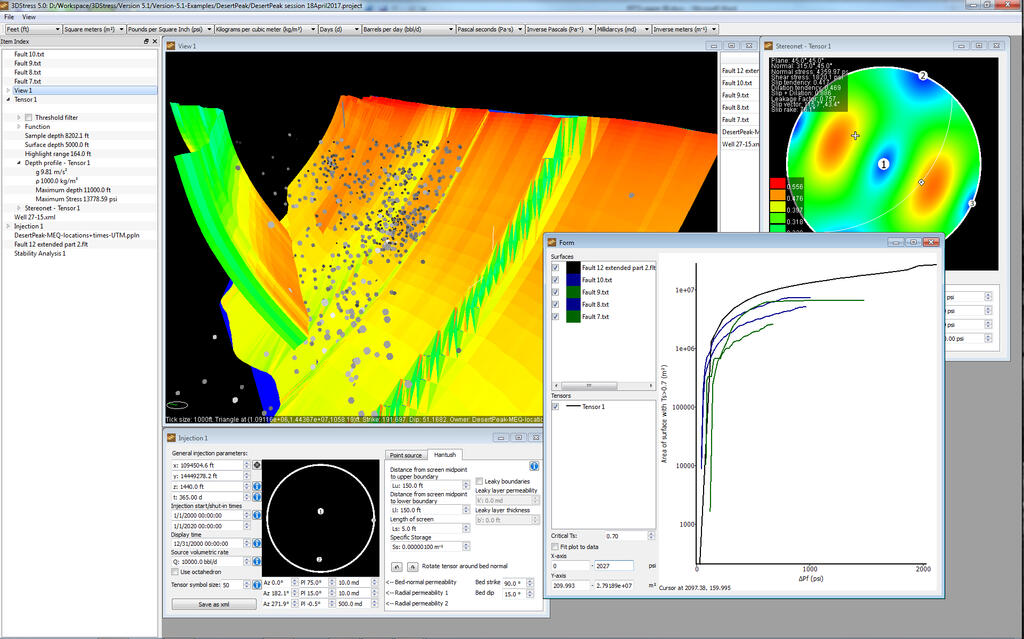3DStress version 5.1 provides robust tools to predict the likelihood of fault reactivation and induced seismicity from wastewater disposal. Induced seismicity, or man-made earthquakes attributed to wastewater disposal, increased dramatically between 2008 and 2015 in the United States, according to the U.S. Geological Survey.
3DStress has been used to simulate injection into a saltwater disposal well in Youngstown, Ohio. The results of this study indicate that the rocks beneath the well contain a fault that was progressively reactivated by the injected fluid, culminating in a magnitude 4.0 earthquake.

The animation above depicts changes in slip tendency and seismicity rate at the Northstar disposal well in Youngstown, Ohio in 2010-2011.
Fault Stability Analysis
Earthquakes result from slip on a pre-existing fault. The larger the fault surface that slips, the larger the earthquake magnitude. 3DStress has tools that evaluate how much of a fault’s area is at risk of slipping in the stress state it is experiencing.

Or call +1 210 522 2748.
